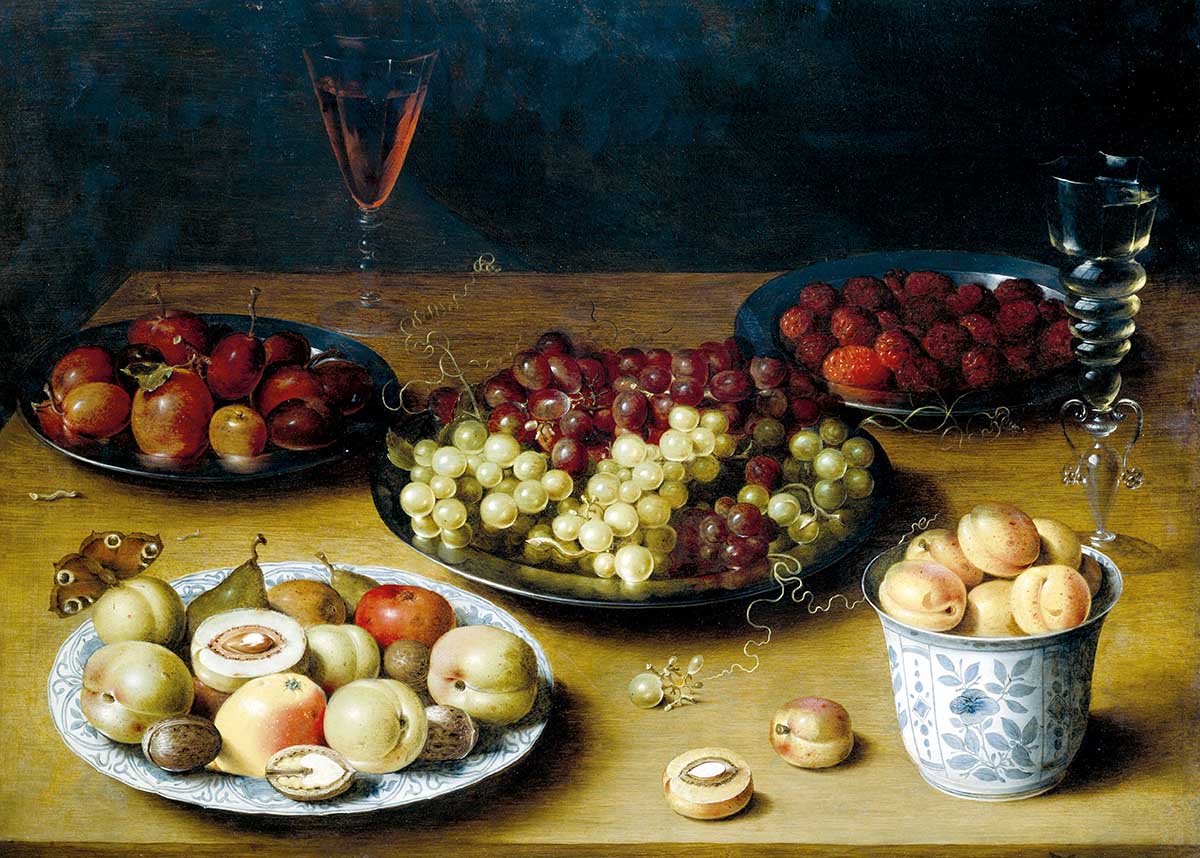White Gold | History Today - 5 minutes read

‘I am not yet so infected with the contagion of China-fancy’, wrote Samuel Johnson in a letter in September 1777, ‘as to like any thing at that rate which can so easily be broken’. At the time, the craze for Chinese export porcelain – ceramics mass-produced in China for foreign markets – had reached epidemic proportions in the Western world: a ‘contagion of China-fancy’. Over 70 million pieces entered Europe in the 17th and 18th centuries and customers from London to Lisbon were desperate for more. The most afflicted were the ‘porcelain sick’ royals and aristocrats, who coated their palace walls, floors and ceilings in ‘white gold’. Patient zero was August the Strong, King of Poland and Elector of Saxony. His Porzellankrankheit was so acute that he amassed a collection of nearly 30,000 pieces and imprisoned the alchemist Johann Friedrich Böttger until he figured out porcelain’s secret recipe, which had been closely guarded by the Chinese for centuries.
Export porcelain fused two worlds – producer and consumer, East and West – establishing a relationship that continues to shape the way the world works today.
Chinese potters first started using porcelain’s essential ingredient kaolin – also known as China clay – during the Shang Dynasty (1600-1046 bc). The best sources for this were the Tibetan Plateau and the Gobi Desert due to the region’s unique geology. China’s ceramicists took what the landscape offered and honed their craft over hundreds of years. By the end of the Song Dynasty (ad 960-1279), potters in Jingdezhen, approximately 600 km west of Shanghai, had perfected the recipe and technique. Even today, wares from Jingdezhen are coveted the world over for their exceptional whiteness, hardness and transparency.
Before it hit Europe, Chinese porcelain fever reached the Middle East. Muslim merchants exported huge amounts of it, starting as early as the ninth century, to markets in Egypt, Syria and Persia. Like the Europeans, potters in the Middle East tried desperately to reproduce Chinese porcelain’s purity and brilliance, but their experiments with ground glass, white clay and tin oxide failed. Persian cobalt oxide, however – which ruined Middle Eastern artisans’ kilns when they tried to glaze their vessels with it – became the perfect blue paint in Chinese hands. The result was that Jingdezhen kilns imported tons of cobalt ore from Persia – a 6,000-km journey – to decorate their wares, which were then sold and shipped back to the Middle East. The large-scale process established the emblematic blue and white decoration that would adorn nearly all of China’s future export porcelain and transformed Jingdezhen into an efficient industrial complex: China’s ‘Porcelain City’.
When Portugal opened sea routes to China in 1513 it discovered porcelain pieces that ‘dumbfound the eyes’, as the Archbishop of Braga gushed in 1563. The Netherlands followed suit in February 1603, when the Dutch East India Company intercepted a Portuguese merchant ship carrying tons of Chinese porcelain near Singapore. The goods were so valuable when they were auctioned in Amsterdam that they doubled the Dutch East India Company’s capital and ignited the Dutch-Portuguese War. Chinese porcelain also affected regional trends in table settings, trade and art. As early as 1615, Chinese porcelain appears in the still-life paintings of Dutch artists, such as Clara Peeters, Floris van Dijck and Osias Beert. The dishes in these early pictures are mostly bowls and cups in standard Chinese shapes, but Europeans soon wanted their porcelain customised and tailored to their every whim.
Butter dishes, tankards, mustard pots, salt cellars and candlesticks: Chinese manufacturers churned out any form to fit Western tastes and lifestyles. Although the Dutch initially insisted that their porcelain be decorated in the exotic ‘Chinese manner’, Jingdezhen artisans soon began illustrating their vessels with themes from European prints and drawings. Armorial designs were especially popular, even if they could be an unfamiliar stumbling block for the Chinese: in one early porcelain jug for the Portuguese market, the customer’s heraldry has been painted upside down. A true hybrid, the jug’s shape is taken from an Islamic vessel produced for Middle Eastern markets. Customised dining sets like these were expensive and could take years to commission, but remained popular in Europe and later in America, where clients replaced family crests with patriotic themes, such as bald eagles, Lady Liberty, George Washington and early American flags.
Chinese porcelain spread well beyond the West and Middle East. Han Dynasty-era (206 bc-ad 220) ceramics have been discovered in modern Vietnam and Tang Dynasty (618-907) porcelains were sold in Japan, Mesopotamia, the Philippines, Malaysia, Indonesia and India. It reached the Swahili coast in the 13th century and Iran in the 15th century. ‘Chinese porcelain was not so much the first global commodity, but the one that spread most widely, for a longer and constant period of time, in huge numbers, with the added characteristics of its endurance and impact in world culture over centuries’, say Jorge Welsh and Luísa Vinhais, the curators of the Porcelain Room: Chinese Export Porcelain at the Fondazione Prada in Milan. At its peak in the 18th century, Jingzhen’s 3,000 kilns employed over a million men, women and children in an elaborate manufacturing process that anticipated modern methods of production. As Welsh and Vinhais put it: ‘Chinese export porcelain brought about ‘the birth of globalisation as we know it today.’
Lauren Moya Ford is a writer and artist based in Spain.